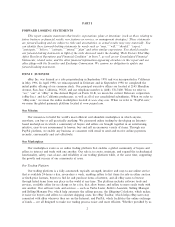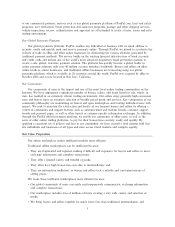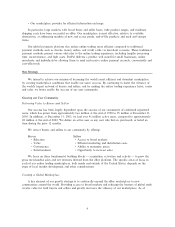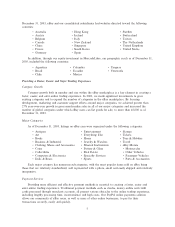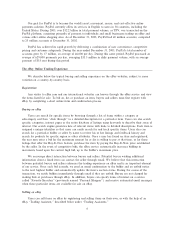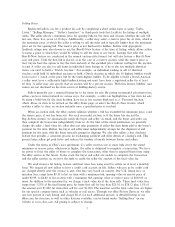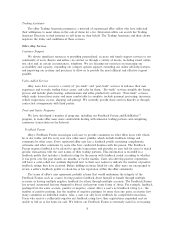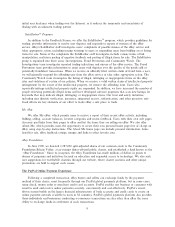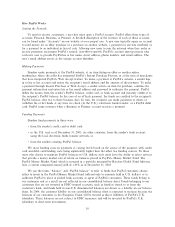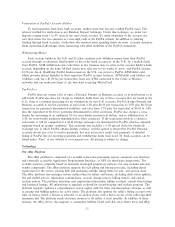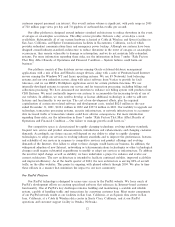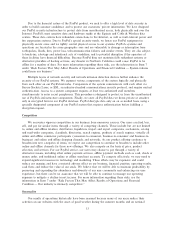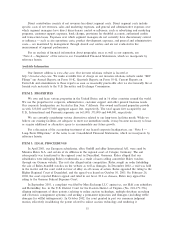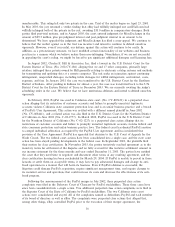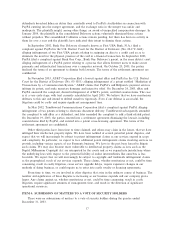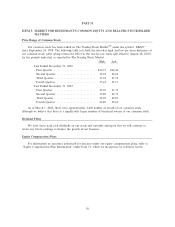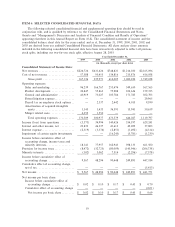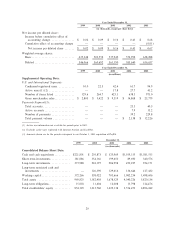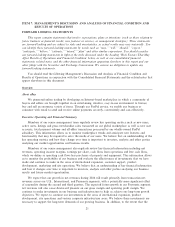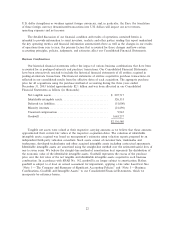eBay 2003 Annual Report Download - page 14
Download and view the complete annual report
Please find page 14 of the 2003 eBay annual report below. You can navigate through the pages in the report by either clicking on the pages listed below, or by using the keyword search tool below to find specific information within the annual report.customer support personnel can interact. Our overall system volume is signiÑcant, with peak usage in 2003
of 720 million page views per day and 7.8 gigabits of outbound data traÇc per second.
Our eBay platform is designed around industry standard architectures to reduce downtime in the event
of outages or catastrophic occurrences. The eBay service provides 24-hours a day, seven-days a week
availability. Substantially all of our system hardware is hosted at Cable & Wireless and Qwest facilities in
San Jose, California, and Sprint Communications facilities in Sacramento, California, each of which
provides redundant communications lines and emergency power backup. Although our systems have been
designed around industry-standard architecture to reduce downtime in the event of outages or catastrophic
occurrences, they remain vulnerable to damage or interruption, and we do not maintain fully redundant
systems. For more information regarding these risks, see the information in Item 7 under ""Risk Factors
That May AÅect Results of Operations and Financial Condition Ì System failures could harm our
business.''
Our platform consists of Sun database servers running Oracle relational database management
applications with a mix of Sun and Hitachi storage devices, along with a suite of Pentium-based Internet
servers running the Windows NT and Linux operating systems. We use F5 Networks' load balancing
systems and our own redundant servers along with select software from Veritas to provide for fault
tolerance, and we use IBM's WebSphere application server for certain platform functions. We use
internally developed systems to operate our service and for transaction processing, including billing and
collections processing. We have announced our intention to enhance our billing system with products from
CSG Systems. We must continually improve our systems to accommodate the increasing levels of use of
our websites. In addition, we may need to develop or license additional technology in order to add new
features and functionality to our services. The cost of our development eÅorts, plus the required
capitalization of certain site-related software and development costs, totaled $82.0 million in the year
ended December 31, 2001, $120.1 million in 2002 and $197.8 million in 2003. Our inability to upgrade our
technology, transaction processing systems, security infrastructure, or network infrastructure to accommo-
date increased traÇc or transaction volume could have adverse consequences. For more information
regarding these risks, see the information in Item 7 under ""Risk Factors That May AÅect Results of
Operations and Financial Condition Ì Our failure to manage growth could harm us.''
Our competitive space is characterized by rapidly changing technology, evolving industry standards,
frequent new service and product announcements, introductions and enhancements and changing customer
demands. Accordingly, our future success will depend on our ability to adapt to rapidly changing
technologies, to adapt our services to evolving industry standards and to improve the performance, features
and reliability of our services in response to competitive services and product oÅerings and evolving
demands of the Internet. Our failure to adapt to these changes would harm our business. In addition, the
widespread adoption of new Internet, networking or telecommunications technologies or other technological
changes could require substantial expenditures to modify or adapt our services or infrastructure. To address
the need for rapid change as well as stability, we have undertaken a project to enhance and evolve our
current architecture. The new architecture is intended to facilitate continued stability, improved scalability
and improved eÇciency. As of the fourth quarter of 2003, the new architecture is serving 80% of overall
traÇc on the eBay websites. This project is ongoing, with phased rollouts through 2004. We plan to time
these rollouts in a manner that minimizes the impact to our user community.
Our PayPal Platform
Our PayPal technology is designed to assure user access to the PayPal website. We focus much of
PayPal's development eÅorts on creating specialized software that enhances its Internet-based customer
functionality. One of PayPal's key challenges remains building and maintaining a scalable and reliable
system, capable of handling traÇc and transactions for a growing customer base. Most major components
of our PayPal network reside at our facilities in San Jose, California, at an Equinix data center in San
Jose, California, at a Cable & Wireless data center in Santa Clara, California, and at our PayPal
operations and customer support facility in Omaha, Nebraska.
12


